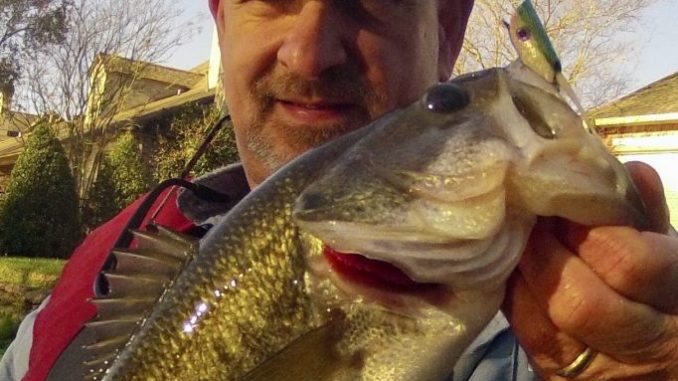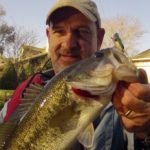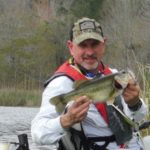
This fly brings topwater fun to the masses
Some years ago, my friend and nationally renowned angler Nick Curcione came to visit. Our intent was to fish the marsh, but a line of severe storms changed our plans.
Instead, we went to the Highway 51 canals. The bass were busting shad, so I tied on a matching pattern.
Nick opted for a new topwater called the Crease Fly.
It’s very rare I got outfished on the 51 Canals, but Nick put it to me that day.
That Crease Fly wasn’t really a popper. When Nick stripped his line, the fly darted. Often, he’d wiggle the fly and a bass would explode on it.
Joe Blados of Long Island, New York, created the Crease Fly. As a teenager, he started making lures for stripers, bluefish and albacore. As he converted to fly fishing, he began to tie his own flies.
In the book “Innovative Saltwater Flies” Blados describes how making balsa poppers was time-consuming and left his house full of dust — which his wife wasn’t too happy with. He got the idea to use sheet foam, crease it over a hook and use glue or epoxy to bond the sides together.
Now, almost 18 years later, the Crease Fly is perhaps the top surface fly for saltwater. It’s also very popular for bass and stripers.
Orvis has converted from selling mostly saltwater poppers to Crease Flies. I asked Alex Beane, manager of the Baton Rouge Orvis store, to explain its popularity.
Alex noted two factors.
First, the fly is a great imitation for shad, small pogies, and other baitfish. Second, it’s easier to cast than balsa or Styrofoam poppers.
That’s significant for novice fly anglers looking to get into the thrill of topwater action but who haven’t yet mastered tight loops. For expert casters, a size 2 Crease Fly can be cast with as light as a 5-weight rod.
Fly tiers have discovered what Blados did: The Crease Fly is a lot easier and a lot less time-consuming to make than balsa or Styrofoam flies.
In Louisiana, the Crease Fly has no greater ambassador than my good friend, Kevin “Doc” Andry.
Andry, band director for St. Michael High School in Baton Rouge, is an avid fly fisher, fly tier and kayak angler. His blog, “Kayak Fishing With Kevin,” chronicles his piscatorial adventures.
Doc fishes this fly on a regular basis for bass and, on occasion, for specks and reds. He’s even improved on the pattern to give it a bit more action.
The materials required include a Gamakatsu B10S size 2 hook, white sticky foam found at most hobby stores, Lame fabric in “tissue” silver or gold, craft fur or bucktail and stick-on eyes.
The first step is to create a teardrop-shaped form that will be used to cut out identical shapes of sticky foam.
Put the form on a sheet of sticky foam, trace the form out, and cut out that shape.
Pull the backing off the sticky foam piece and attach a cut square of Lame fabric to the foam. This is the “crease piece.”
Wrap a thread base on the hook and tie in a tail of craft fur or bucktail. The tail should be no longer than the hook shank.
The next step is Doc’s improvement: He ties in a small rectangle piece of foam on top of the hook shank, closer toward the eye. This gives more surface area for the crease piece to bond to, and it adds more buoyancy to the front of the fly.
With this addition, the fly floats higher in the front than in the back. When the fly is stripped, it dips and darts like a Zara Spook.
Next, take the crease piece and add drops of Super Glue gel to the side opposite the fabric. Fold it over the top of the hook and pinch the sides down. Doc suggests using a tiny clamp instead of fingers.
The Lame tissue fabric emulates scales of a baitfish. You can use permanent markers to add color to the tops and sides.
Stick-on eyes come last.
To protect the eyes and body, use a coat of a clear water-based exterior acrylic (e.g., Delta Ceramcoat) or 30-minute epoxy. Another option is a UV-based epoxy.
Doc joined me on a recent trip to one of my home waters. Early in the morning, I caught several bass between 12 and 16 inches on my favorite: the frog-colored Boogle Bug.
My partner wasn’t so lucky — at first. But as the morning wore on, his silver Crease Fly began to make up ground.
The highlight was when a 17-incher blasted his offering.
I’m not yet ready to give up on balsa poppers, but there’s no doubt that this fly will in-crease your odds of catching fish.




